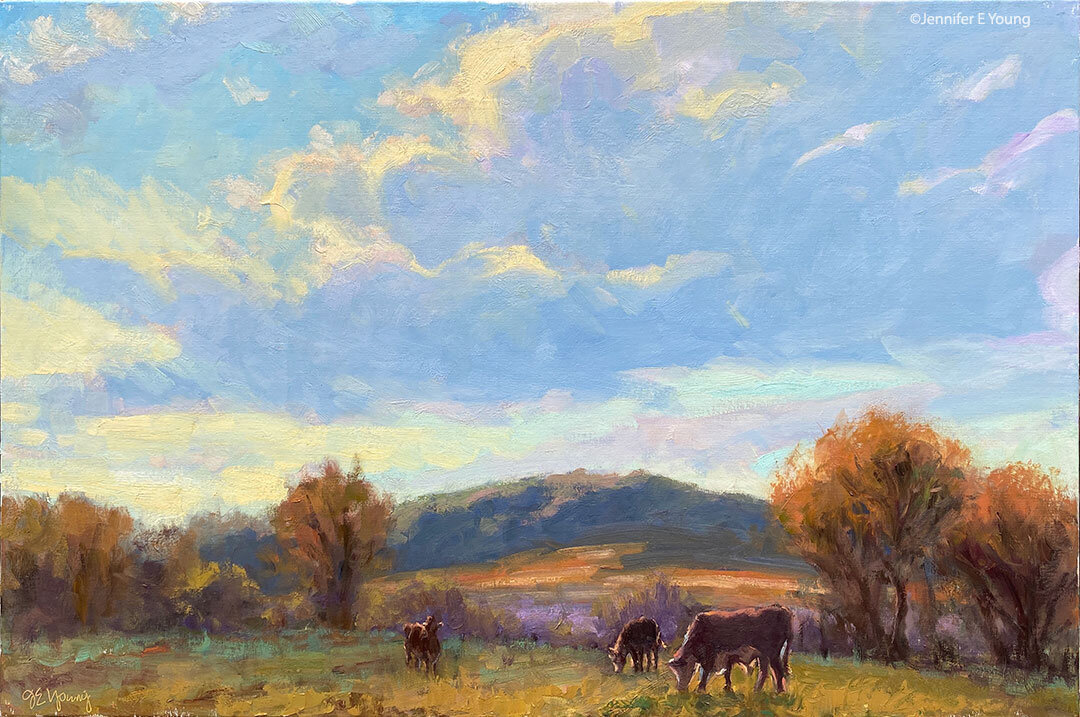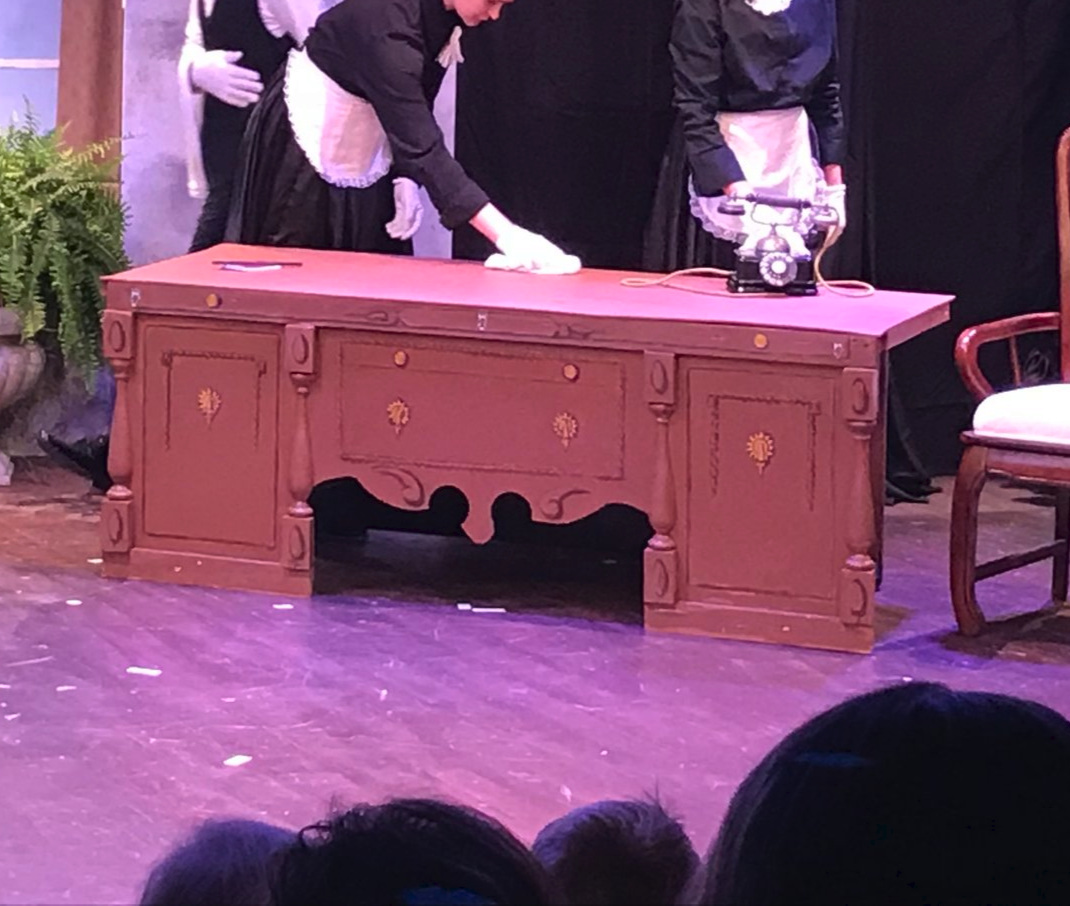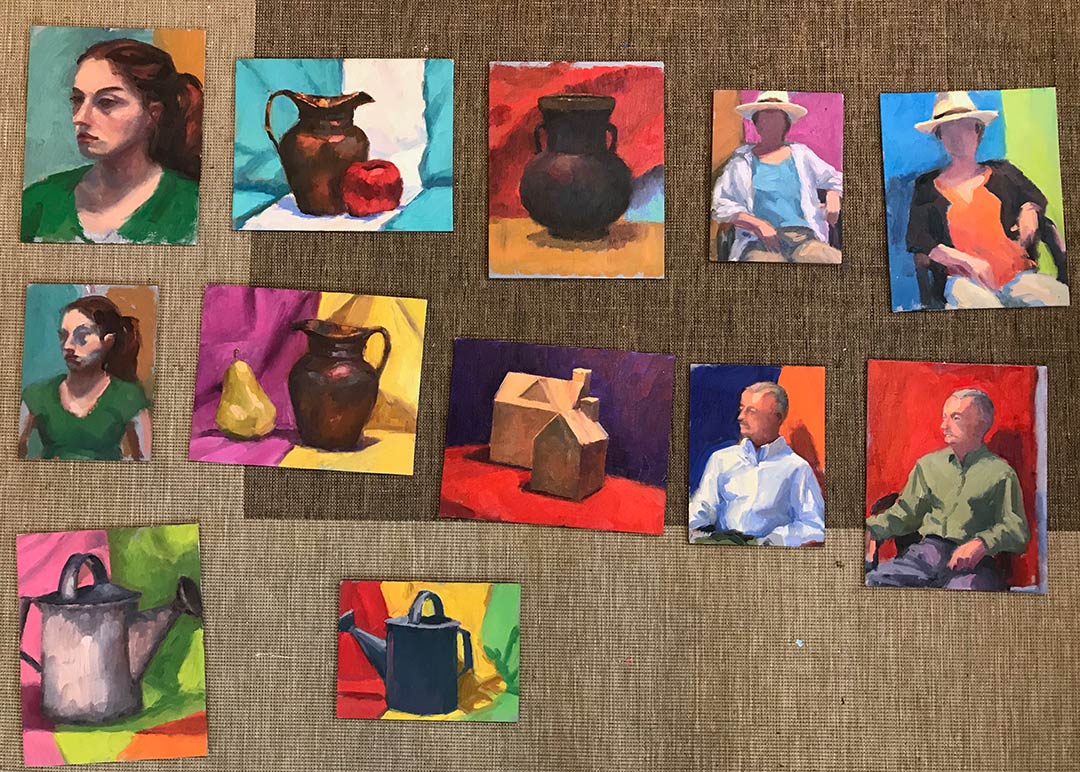Mixing Greens
/I live in Virginia, and one of the most beautiful things about this area in the milder months is the vast arrays of greens. As a landscape painter this is also one of the most challenging aspects about painting in this area!
 In my opinion it is a good idea to try and mix your own greens as much as possible. It is easy to spot a painting that uses a lot of out-of-the-tube greens. It's not that tube greens are bad (and I definitely carry at least one when I paint en plein air because of the need for speed.) But painters can become over-reliant on them to the point where the same green is used for everything (trees, grass, shrubs, etc.) and the painting lacks nuance or variation.
In my opinion it is a good idea to try and mix your own greens as much as possible. It is easy to spot a painting that uses a lot of out-of-the-tube greens. It's not that tube greens are bad (and I definitely carry at least one when I paint en plein air because of the need for speed.) But painters can become over-reliant on them to the point where the same green is used for everything (trees, grass, shrubs, etc.) and the painting lacks nuance or variation.
The possibilities for mixing greens are seemingly endless. Here are some of the combinations (for oil painting) that I use often:
- Warm blue (like pthalo)+ cool yellow (lemon) gives you a strong, kelly green
- Cool blue (ultramarine) + warm yellow (cad. yellow) yields a duller, muted green
- Cobalt blue is a true blue, and will yield a little cleaner green than ultramarine because ultramarine blue has red in it.
- Experiment mixing warms and cools and you'll get greens that fall in the middle of these two extremes!
- A good replacement for Sap Green: try mixing Prussian Blue or Pthalo Blue with Indian yellow. This will give you a similar dark, transparent green.
- Lightening your greens can get a little tricky. Add too much white and your greens appear chalky. White also cools your colors considerably. Add too much yellow and your greens get brighter and warmer, which may not be what you're going for. The key is balance and a lot of experimentation (a.k.a trial and error!)
- For distant greens, like at the horizon line of a distant field, try mixing white with a touch of blue and orange, and blending that into your greens as the field recedes.
- Alternately, you could gray your greens down ever so slightly with a touch of a complimentary color like Alizarin crimson plus white.
Mixing greens is definitely a practiced skill, so my best advice if you are a landscape painter is to practice! It helps to create your own color charts with all of the various combinations of greens that you can mix, labled with the paints used to achieve each mixture. Within this chart, also try and mix a value scale, to see what the green mixture would look like lighter or darker.
Here's an idea if you want even more of a challenge: Try limiting your palette to Permanent Alizarin, Ultramarine or Cobalt Blue, Cadmium Yellow Light, and Titanium White, and see if you can execute the whole painting with just those colors. When you've practiced this for a while, add Phtalo or Windsor green to your palette. This is what Kevin Macpherson suggests in his excellent book Fill Your Oil Paintings With Light and Color
Do you have a favorite green color mixture for your landscape paintings? Share your ideas by leaving a comment!
Tags: art painting landscape painting artist Virginia landscape paintings plein airÂ











